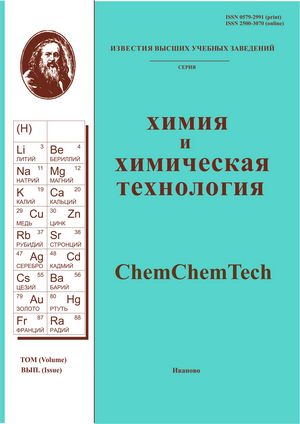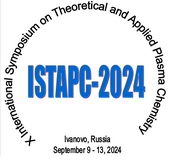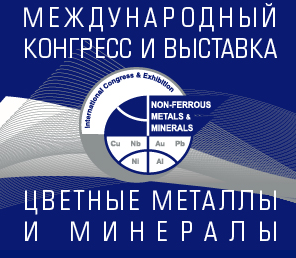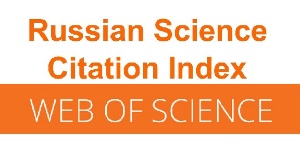ИСПОЛЬЗОВАНИЕ ЭФФЕКТИВНОГО УГЛЕРОДНОГО ЧИСЛА В КОЛИЧЕСТВЕННОМ АНАЛИЗЕ АМИНОСПИРТОВ И ПОЛИАМИНОВ
Аннотация
При проведении хроматографического анализа веществ методом газо-жидкостной хроматографии с использованием пламенно-ионизационного детектора (ПИД) фактор отклика ко многим органическим веществам может быть рассчитан с помощью так называемого эффективного углеродного числа (Efective Carbon Number, ECN). Эффективное углеродное число показывает, сколько атомов углерода содержит линейный алкан, соответствующий чувствительности детектора к анализируемому веществу. Фактический вклад каждого углеродного атома в ECN зависит от его связи с другими атомами. Описанные в литературе методики расчета ECN не дают адекватных значений фактора отклика ПИД для полифункциональных соединений, содержащих гетероатомы. В настоящей работе была расширена концепция ECN для анализа аминоспиртов и полиаминов с использованием н-бутанола в качестве внутреннего стандарта. Экспериментально определены относительные коэффициенты отклика 17 ациклических и алициклических соединений, содержащих аминные, гидроксильные и эфирные функциональные группы. Показано, что наличие цикла или третичного атома азота не оказывает влияния на величину ECN. Полученные результаты показали, что разработанный метод может быть использован для количественного анализа аминоспиртов и полиаминов. Преимущества данного метода заключаются в исключении необходимости в получении стандартов высокой чистоты, а также в точном приготовлении и анализе растворов этих соединений. Методика может применяться для количественного определения состава многокомпонентной смеси веществ известной структуры.
. . . . . . . . . . . . . . . . . . . . . . . . . . . . . . . . . . . . . . . . . . .
Литература
Peng C.T. Prediction of retention indices: V. Influence of electronic effects and column polarity on retention index. J. Chromatogr. A. 2000. V. 903. P. 117–143. DOI: 10.1016/S0021-9673(00)00901-8.
Katritzky A.R., Ignatchenko E.S., Barcock R.A., Lobanov V.S., Karelson, M. Prediction of Gas Chromato-graphic Retention Times and Response Factors Using a General Qualitative Structure-Property Relationships Treatment. Anal. Chem. 1994. V. 66. P. 1799–1807. DOI: 10.1021/ac00083a005.
Jung S.H., Kim S.J., Kim J.S. Characteristics of products from fast pyrolysis of fractions of waste square timber and ordinary plywood using a fluidized bed reactor. Biores. Technol. 2012. V. 114. P. 670-676. DOI: 10.1016/j.biortech.2012.03.044.
Frank B., Xie Z.-L. Trunschke A. Higher Alcohol Synthesis: Product Analysis Using the Concept of Effective Carbon Numbers. Chemie Ingenieur Technik. 2013. V. 85. P. 1290-1293. DOI: 10.1002/cite.201300006.
Llorente D.D., Abrodo P.A., de la Fuente E.D., Alonso J.J.M., Alvarez M.D.G., Gomis D.B. A novel method for the determination of total 1,3-octanediols in apple juice via 1,3-dioxanes by solid-phase microextraction and high-speed gas chromatography. J. Chromatogr. A. 2010. V. 1217. P. 2993-2999. DOI: 10.1016/j.chroma.2010.02.074.
Scanlon J.T., Willis D.E. Calculation of Flame Ionization Detector Relative Response Factors Using the Effective Carbon Number Concept. J. Chromat. Sci. 1985. V. 23. N 8. P. 333–340. DOI: 10.1093/chromsci/23.8.333.
Becker C., Deeb A.A. Teutenberg T., Jochmann M.A., Schmidt T.C. Determination of liquid chromatog-raphy/flame ionization detection response factors for N-heterocycles, carboxylic acids, halogenated compounds, and others. Analyt. Bioanalyt. Chem. 2020. V. 412. P. 171–179. DOI: 10.1007/s00216-019-02222-1.
Kállai M., Balla J. The effect of molecular structure upon the response of the flame ionization detector. Chromatographia. 2002. V. 56. P. 357–360. DOI: 10.1007/BF02491945.
Kállai M., Veres Z., Balla J. Response of flame ionization detectors to different homologous series. Chroma-tographia. 2001. V. 54. P. 511-517. DOI: 10.1007/BF02491209.
Morvai M., Pályka I., Molnár-Perl L. Flame Ionization Detector Response Factors Using the Effective Carbon Number Concept in the Quantitative Analysis of Esters. J. Chromat. Sci. 1992. V. 30. P. 448-452. DOI: 10.1093/chromsci/30.11.448.
Szulejko J.E., Kim Y.H., Kim K.H. Method to predict gas chromatographic response factors for the trace-level analysis of volatile organic compounds based on the effective carbon number concept. J. Sep. Sci. 2013. V. 0. P. 1-10. DOI: 10.1002/jssc.201300543.
Szulejko J.E., Kim K.H. Reevaluation of effective carbon number (ECN) approach to predict response factors of ‘compounds lacking authentic standards or surrogates’ (CLASS) by thermal desorption analysis with GC–MS. Analyt. Chim. Acta. 2014. V. 851. P. 14-22. DOI: 10.1016/j.aca.2014.08.033.
Faiola C.L., Erickson M.H., Fricaud V.L., Jobson B.T., VanReken T.M. Quantification of biogenic volatile organ-ic compounds with a flame ionization detector using the effective carbon number concept. Atmos. Meas. Tech. 2012. V. 5. P. 1911–1923. DOI: 10.5194/amt-5-1911-2012.
Kdllai M., Matte V., Balla J. Effects of Experimental Conditions on the Determination of the Effective Carbon Number. Chromatographia. 2003, V. 57. P. 639-644. DOI: 10.1007/BF02491742.
Mátyási J., Zverger D., Gaál B., Balla J. The Effect of the Linear Velocity on the Detector Response and Effec-tive Carbon Number: The Role of the Experimental Conditions in the Quantitative Analysis. Period. Polytech. Chem. Eng. 2021. V. 65. P. 158-166. DOI: 10.3311/PPch.16130.
Demidova Y.V., Potekhin V.V. Demidov P.A. On Reactivity of Piperazine Aminogrups in Interaction with Eth-ylene Oxide. ChemChemTech [Izv. Vyssh. Uchebn. Zaved. Khim. Khim. Tekhnol.]. 2020. V. 63. N 11. P. 77-81. DOI: 10.6060/ivkkt.20206311.6188.
Becker C. Development of a thermospray nebulizer interface for liquid chromatography with flame ionization detection and detector response studies of volatile and non-volatile compounds. 2019. Universität Duisburg-Essen. 137 p. DOI: 10.17185/duepublico/70525.
Hore N.R., Russell D.K. Radical pathways in the thermal decomposition of pyridine and diazines: a laser pyrolysis and semi-empirical study. J. Chem. Soc. Perkin Trans. 2. 1998. N 2. P. 269-276. DOI: 10.1039/A706731C.
Torkil H. Mechanism of the flame ionization detector II. Isotope effects and heteroatom effects. J. Chromatogr. A. 1997. V. 782. N 1. P. 81-86. DOI: 10.1016/S0021-9673(97)00483-4.
Jorgensen A.D., Picel K.C., Stamoudis V.C. Prediction of gas chromatography flame ionization detector response factors from molecular structures. Analyt. Chem. 1990. V. 62. P. 683-689. DOI: 10.1021/ac00206a007.



















